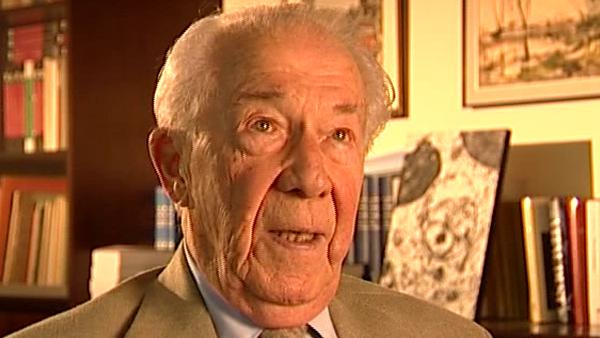NEXT STORY

Experiments resulting from the 2nd International Biochemistry Congress
RELATED STORIES

NEXT STORY

Experiments resulting from the 2nd International Biochemistry Congress
RELATED STORIES


|
Views | Duration | |
|---|---|---|---|
| 31. Using centrifugal fractionation to locate enzymes | 162 | 03:29 | |
| 32. The first fractionation experiment | 166 | 03:52 | |
| 33. Surprising results of the first fractionation experiment | 170 | 04:14 | |
| 34. Experiments resulting from the 2nd International Biochemistry... | 143 | 02:21 | |
| 35. Experimenting with phenolphthalein | 118 | 03:08 | |
| 36. George Hogeboom and Walter Schneider | 144 | 04:08 | |
| 37. Using Jesuit logic to solve a problem | 323 | 01:39 | |
| 38. Three possible explanations for our findings | 133 | 02:30 | |
| 39. Acid phosphatase: A new kind of particle | 133 | 06:01 | |
| 40. Experimenting with acid phosphatase | 117 | 04:41 |


So the next week, a couple of days before Christmas actually, they assayed the fractions again; they assayed them with new reagents, fresh reagents, but also with the old reagents to find out what was wrong. Well, there was nothing wrong with the old reagents – they got exactly the same results with the two reagents – but now suddenly the enzyme was there; in the homogenate there was the amount they expected, the recovery was fairly satisfactory, and there was more enzyme in all the fractions but mostly in the mitochondrial fraction. There was a huge increase of activity in the mitochondrial fraction. And I guess this is where my training by the Jesuits helped. I had been taught to reason logically and so I looked at those results and I said to myself... we looked, because we were discussing, and I said, 'Well, what do we have here? We have an enzyme that is hidden and an enzyme that is mostly associated with sedimentable particles with mitochondrias, as we called them at that time. So maybe the two are related? Maybe latency being hidden is related to sedimentability? Let's find out.' So I said, 'Centrifuge that fraction... that end fraction in which you now found so much activity.' They centrifuged it and, yes, the enzyme was no longer sedimentable; it was in the supernated, inactive. So I said, 'Well, that's... that's too exciting; I have to understand what's happening. Let's put insulin on the back burner and let's concentrate on this little problem; we'll get the explanation very quickly' – at least I thought so. Indeed, very quickly we found the explanation, simply by taking isolated particles and subjecting them to various treatments that would injure them. There's very mechanical grinding in a waring blender, a kitchen blender, or osmotic, we put them in distilled water, we could freeze them and thaw them a number of times and so on. In each case the enzyme would become free... would be free and active. And the long and short of the story was that all this could be explained by assuming that the enzyme was inside a little bag, surrounded by a membrane, and that as long as the membrane was intact, the enzyme would remain inside the bag and the substrate, which we added beta glycerol phosphate to assay the enzyme, would remain outside. They would not be able to interact. If we tore the membrane, one way or another, enzyme would come out, substrate would get in, and we'd get the activity, and so that was the explanation. Having solved the problem I could have gone back to insulin which was on the black burner... on the back burner, sorry. But in the meantime I had attended a meeting in Paris, the 2nd Biochemistry Congress – 1951, I guess; yes, '51.
Belgian biochemist Christian de Duve (1917-2013) was best known for his work on understanding and categorising subcellular organelles. He won the Nobel Prize in Physiology or Medicine in 1974 for his joint discovery of lysosomes, the subcellular organelles that digest macromolecules and deal with ingested bacteria.
Title: Surprising results of the first fractionation experiment
Listeners: Peter Newmark
Peter Newmark has recently retired as Editorial Director of BioMed Central Ltd, the Open Access journal publisher. He obtained a D. Phil. from Oxford University and was originally a research biochemist at St Bartholomew's Hospital Medical School in London, but left research to become Biology Editor and then Deputy Editor of the journal Nature. He then became Managing Director of Current Biology Ltd, where he started a series of Current Opinion journals, and was founding Editor of the journal Current Biology. Subsequently he was Editorial Director for Elsevier Science London, before joining BioMed Central Ltd.
Tags: fractionation, fractions, reagents, enzymes, mitochondrial fraction, mitochondrias
Duration: 4 minutes, 14 seconds
Date story recorded: September 2005
Date story went live: 24 January 2008